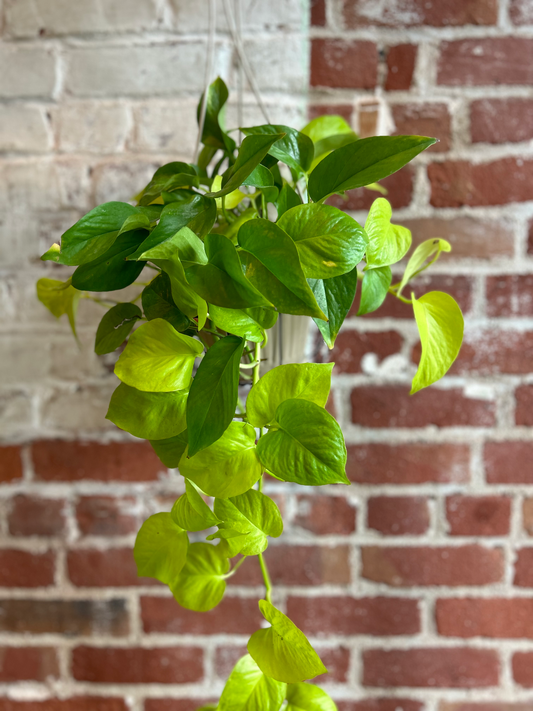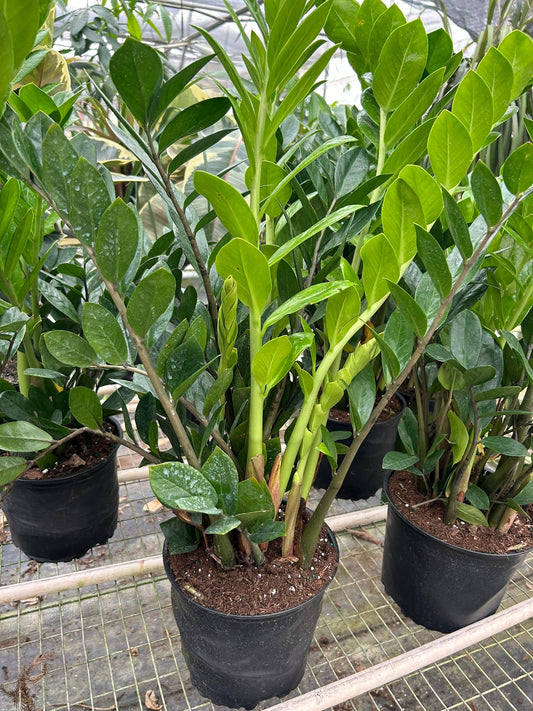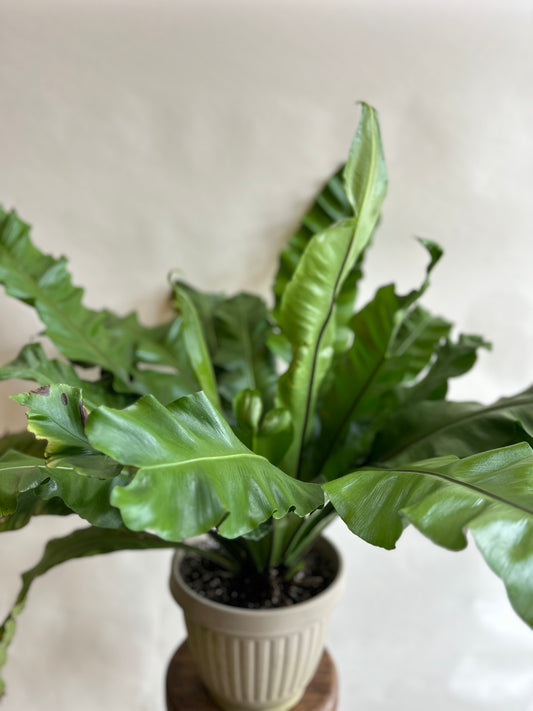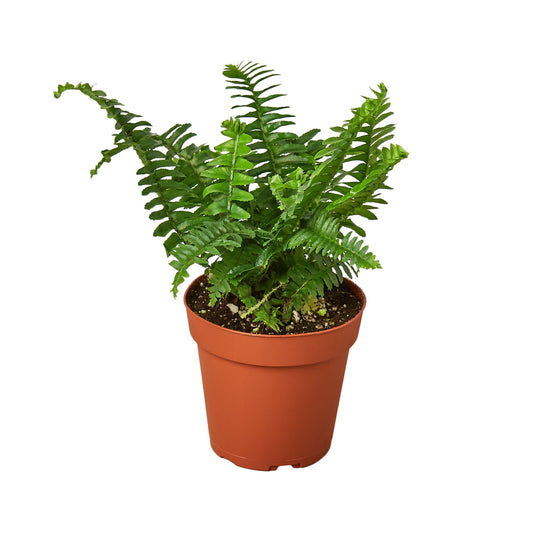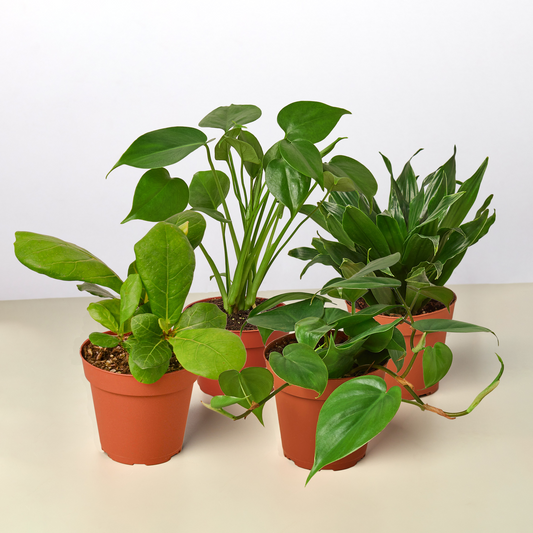What is the Best Soil Type for Umbrella Plants?
Cafe Planta Team
Umbrella plants, with their elegant foliage and easy-going nature, have become a staple in many homes. But if you're looking to keep yours thriving, you'll need to give some thought to the soil it calls home. Picking the right soil can make all the difference in keeping your plant not just alive, but healthy and lush.
In this post, we'll discuss what makes the best soil for umbrella plants. From understanding the plant's natural habitat to mixing your own potting blend, we've got everything you need to know to keep your umbrella plant happy and vibrant.
Understanding Umbrella Plants
Before we get into the nitty-gritty of soil types, it's helpful to understand a bit about the umbrella plant itself. Also known as Schefflera, these plants hail from the tropical regions of Taiwan and Hainan. They love warm, humid environments and can grow up to 10 feet tall indoors if given the right conditions.
The key to a happy umbrella plant is mimicking its natural habitat as closely as possible. In the wild, they're found in well-draining soil that's rich in organic material. They don't like to sit in water, so ensuring good drainage is crucial. This means that the soil needs to retain some moisture but not become waterlogged.
Why Soil Type Matters
You might wonder why you can't just use any old bag of soil for your umbrella plant. The truth is, the wrong soil can lead to a host of problems. Poor drainage can cause root rot, a common issue for umbrella plants. If the soil is too dense or compacted, it can suffocate the roots and stunt growth.
Furthermore, soil that's too sandy won't retain enough moisture, leaving your plant thirsty. Finding the right balance of moisture retention and drainage is key. The right soil will also provide the nutrients your plant needs, supporting its overall health and growth.
Ingredients for the Perfect Potting Mix
Creating the perfect soil mix for your umbrella plant isn't rocket science, but it does require a bit of understanding about what components work best together. Here are some ingredients that can make a big difference:
- Peat Moss: This helps retain moisture while remaining lightweight, which is great for drainage.
- Perlite: These tiny white stones improve aeration and drainage, preventing the soil from becoming compacted.
- Bark Chips: They provide essential nutrients and improve drainage.
- Compost: Adds nutrients and improves the soil structure.
- Sand: Helps with drainage but should be used sparingly to avoid drying out the soil too much.
Combining these elements in the right proportions can create a rich, well-draining soil that will keep your umbrella plant healthy.
Mixing Your Own Potting Soil
Now that you know the ingredients, let's talk about how to mix them. A standard mix that works well for umbrella plants might look something like this:
- 1 part peat moss or coconut coir
- 1 part perlite
- 1 part bark chips or compost
- Optional: a small handful of sand for extra drainage
Mix these together in a large container, ensuring that the ingredients are well-blended. You want a mix that feels light and airy, not dense or heavy. If you squeeze a handful of the soil, it should hold its shape but crumble easily when poked.
Buying Pre-Mixed Potting Soil
If mixing your own soil sounds like more effort than you're ready for, don't worry. There are plenty of pre-mixed potting soils available that can work well for umbrella plants. Look for products labeled as suitable for tropical plants or those designed for cacti and succulents, as these will usually have the right drainage properties.
When choosing a pre-mixed soil, check the ingredients list. You want to see some of the components we've talked about, like peat moss, perlite, and bark chips. Avoid soils that are heavy on clay or those that don't mention any additives for drainage.
Repotting Your Umbrella Plant
Once you've got the right soil, it's time to repot your umbrella plant. Repotting is necessary when your plant has outgrown its current pot, or if the soil has become compacted or depleted of nutrients. Here's a simple step-by-step guide to repotting:
- Choose the Right Pot: Select a pot that's 2-3 inches larger in diameter than the current one. Make sure it has drainage holes.
- Remove the Plant: Gently remove your umbrella plant from its current pot. You can tip the pot on its side and tap the bottom to loosen the soil.
- Check the Roots: Examine the roots for any signs of rot or damage. Trim away any dead or mushy roots with clean scissors.
- Add Soil: Place a layer of your new soil mix in the bottom of the new pot.
- Position the Plant: Set your plant in the pot, ensuring it's at the same depth as before. Fill in around the roots with more soil, gently pressing it down to eliminate air pockets.
- Water Thoroughly: Water the plant until it drains from the bottom, ensuring the soil is evenly moist.
Allow the plant to settle in its new home, and keep an eye on its water needs as it adjusts.
Watering and Soil Care
Once your umbrella plant is nestled in its perfect soil mix, proper watering becomes the next big thing. These plants prefer their soil to be consistently moist but not waterlogged. Overwatering can lead to root rot, while underwatering can cause the leaves to droop and turn yellow.
Here are some watering tips:
- Check the Topsoil: Before watering, check the top 1-2 inches of soil. If it feels dry, it's time to water. If it's still moist, hold off for a day or two.
- Water Evenly: Pour water evenly around the base of the plant until it starts to drain from the bottom. This ensures all roots get a drink.
- Drain Excess Water: Never let your plant sit in a saucer full of water. Empty it out to prevent root rot.
- Adjust for Seasons: In the growing season (spring and summer), you may need to water more frequently. In the dormant period (fall and winter), reduce watering as the plant's growth slows down.
Signs of Soil-Related Problems
Even with the best intentions, sometimes things can go awry. It's important to recognize signs that your umbrella plant's soil might not be up to par. Here are some common issues and their symptoms:
- Root Rot: If the plant is wilting despite consistent watering, or if the soil smells sour, you might have root rot. This is usually due to poor drainage or overwatering.
- Compacted Soil: If water pools on the surface and doesn't soak in, the soil may be too compacted. This can suffocate roots and hinder growth.
- Nutrient Deficiency: Pale or yellowing leaves can indicate a lack of nutrients in the soil. Consider adding a balanced fertilizer or repotting with fresh soil.
Addressing these issues promptly can help your plant bounce back and continue to thrive.
Fertilizing Your Umbrella Plant
While a good soil mix provides a solid foundation, your umbrella plant will benefit from additional nutrients during the growing season. A balanced liquid fertilizer can give your plant the boost it needs.
Here’s a simple fertilizing routine:
- Frequency: Fertilize every 4-6 weeks during the spring and summer months.
- Type: Use a balanced, water-soluble fertilizer diluted to half strength.
- Application: Water your plant as usual, then follow with the fertilizer solution.
- Pause in Winter: Reduce or stop fertilizing in the fall and winter when the plant’s growth naturally slows.
Keeping an eye on your plant’s response will help you tweak this schedule as needed.
Common Myths About Plant Soil
There are plenty of myths out there about plant soil, and it’s easy to get caught up in misinformation. Here are a few myths busted to set the record straight:
- Myth: All Plants Can Use the Same Soil. Different plants have unique needs, and using a one-size-fits-all approach can lead to problems.
- Myth: More Fertilizer Means Faster Growth. Over-fertilizing can harm your plant. It’s important to use the right amount at the right time.
- Myth: Adding Gravel Improves Drainage. While it seems logical, adding gravel can actually impede drainage and lead to root issues.
Understanding these myths helps you make better choices for your plant care routine.
Final Thoughts
Getting the soil right for your umbrella plant is all about finding that sweet spot between moisture retention and drainage. By choosing or crafting a proper potting mix, you're setting up your plant for success. Remember to keep an eye on watering and be mindful of any signs that your plant might need a little extra TLC.
At Cafe Planta, we believe that plants are more than just decor—they’re a way of life. Whether you're a seasoned plant parent or just starting out, we’re here to support you. If you have questions or need advice, feel free to email us or drop us a message on our Instagram. We’re excited to help you build a thriving plant collection and share the joy of plants with you.


